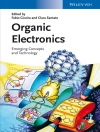This thesis describes novel devices for the secure identification of objects or electronic systems. The identification relies on the the atomic-scale uniqueness of semiconductor devices by measuring a macroscopic quantum property of the system in question. Traditionally, objects and electronic systems have been securely identified by measuring specific characteristics: common examples include passwords, fingerprints used to identify a person or an electronic device, and holograms that can tag a given object to prove its authenticity. Unfortunately, modern technologies also make it possible to circumvent these everyday techniques.
Variations in quantum properties are amplified by the existence of atomic-scale imperfections. As such, these devices are the hardest possible systems to clone. They also use the least resources and provide robust security. Hence they have tremendous potential significance as a means of reliably telling the good guys from the bad.
Jadual kandungan
An Introduction to Security Based on Physical Disorder.- An Introduction to Semiconductors and Quantum Confinement.- Sample Preparation and Experimental Techniques.- Unique Identification with Resonant Tunneling Diodes.- Langmuir-Blodgett Deposition of 2D Materials for Unique Identification.- Building Optoelectronic Heterostructures with the Langmuir-Blodgett Technique.- Conclusions and Future Work.












